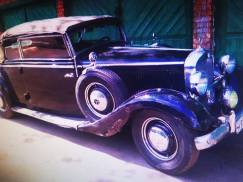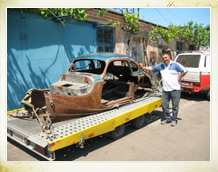Long undercarriage was known to be average type of undercarriage for model 230, although there were accepted enough orders for beloved among customers 4-place couples of model 200, wide 6-place coupes were bigger that those of previous models. Until 1941, old model 230 remained in assortment in this form.
As a new model 230 (W 153) in 1939 at automobile exhibition appeared new car with renewed coupe, constructed and designed by H. G. Rer, who headed Automobile department in Join stock company Daimler-Bents for 2 years until his death in August 1937. This new model 230 because of war was not appraised in a proper manner, but until 50th remained the base model for construction of models 170 S and 220.

























































